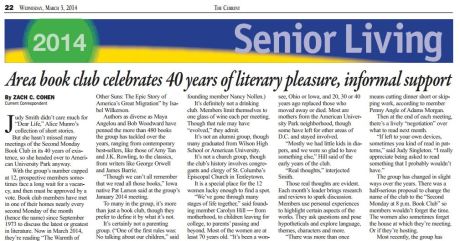I try not to ask much from you, but this is a time where I feel I must.
I got my start in journalism at The Eagle, American University’s student newspaper since 1925. I took every assignment I could get my hands on and eventually from there became a Student Government beat reporter. They liked me enough to give me a section editing position and finally editor-in-chief. The Eagle taught me everything I needed to know in order to be a journalist in Washington, D.C.
Journalism can be a force for good at American University, and The Eagle has worked to that promise. In my four years there, the journalists at The Eagle have uncovered: the history of WWI-era chemical munitions buried in the grounds of AU’s land, the then-unannounced-but-already-decided smoking and tobacco ban, an investigation of fraternity hazing, lobbying efforts by the university on Capitol Hill, how local laws affect students, lawsuits and so, so much more.
At the same time, the staff dutifully dropped papers and homework to cover breaking news, which has included everything from gunmen to rallies. The Eagle has been on the forefront of sports and A&E coverage on campus and gives young journalists the opportunity to cover the events in Washington alongside professional journalists.
It has won more awards from the Society of Professional Journalists than I can remember, and Eagle staffers every year win scholarships through outside journalism organizations. They serve in internships at national and local news organizations and graduate to become major newsmakers and storytellers. Alumni of The Eagle currently work at The Washington Post, USA Today, NBC, Turner, the White House and more.
The Eagle has tirelessly worked for the American University community. Now it needs your help.
The Eagle’s financial stability, like that of countless other newspapers across the country, is in question. Declining advertising revenue forced The Eagle to lose its weekly print edition last year. The staff has adopted a digital-first approach and is making money with a redesigned website in cooperation with the Student Media Board. The burdens this placed on the staff should have been greater and was only lessened by their untiring dedication to journalism on campus and the generous support of alumni.
But there’s work to be done. To ensure The Eagle has the funds every year to innovate and provide the journalism AU needs, and the training its staff needs to compete in the global workforce, it needs more than just advertising revenue and allocations from AU.
Enter The Eagle Innovation Fund. If we raise $10,000 by April 25, the university will set up a permanent endowment, the interest from which will fund The Eagle in the years to come, allowing its journalists to focus on the business of journalism rather than on the business of making money.
If you care about journalism on campus and across the country, here is one place where your donation, as big or as small as it needs to be, will make a difference. Help The Eagle do what it has proven it can do: Shine a light on AU and train journalists to report on the world.
If you’ve ever read, commented on or shared a story from The Eagle…or picked up print edition…
If you know somebody who works in journalism and know how hard they work…
If you know somebody who lost their job in journalism despite all the work they did..
If you’ve ever covered breaking news…
If you’ve ever spent a night on deadline…
You know what it takes to make journalism happen. Help us continue to do it. Donate today.


